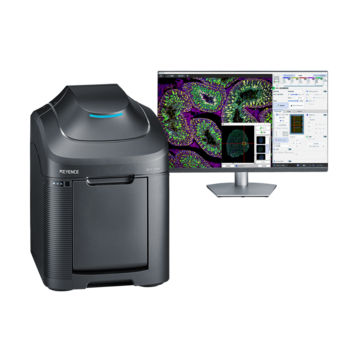Fluorescence Microscopes
Improving Research for the Development of Gene Therapy Drugs
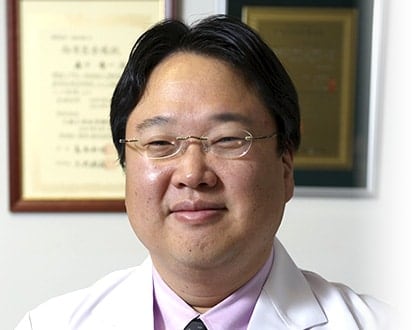
Dr. Ryuichi Morishita
Clinical Gene Therapy—Graduate School of Medicine, Faculty of Medicine, Osaka University
Professor, Doctor of Medicine
Dr. Ryuichi Morishita was born in 1962. He graduated from the Faculty of Medicine, Osaka University in 1987. He was Visiting Instructor at Stanford University School of Medicine, Division of Cardiovascular Medicine from 1991 to 1994. After working as Assistant Professor at Osaka University Graduate School of Medicine, Gene Therapy Section, he took his current post in 2003. He established a venture startup called MedGene Co., Ltd. (now AnGes MG, Inc.) aimed at drug development in 1999. Other previous concurrent posts include being a member of the Headquarters for Intellectual Property Strategy, Cabinet Office; a member of the Committee for Intellectual Property, Ministry of Economy, Trade and Industry; and a member of the Council for Science and Technology of the Ministry of Education, Science and Culture of Japan. Dr. Morishita has received many awards, including the Harry Goldblatt Award (Council on Hypertension, American Heart Association), the Medical Research Encouragement Prize of the Japan Medical Association, and the Japan Heart Foundation Sato Award of the Japanese Circulation Society.
Get detailed information on our products by downloading our catalog.
View Catalog

Leading the world in the development of gene therapy drugs: Advanced efforts in finding treatment for refractory diseases
Dr. Ryuichi Morishita is a professor at the Osaka University Graduate School of Medicine, leading the world in the research for the practical application of gene therapy. In 2003, he was the first to launch a laboratory dedicated to gene therapy with “clinical” in its name and works on basic research and translational research for drug discovery and clinical therapy. As one of his notable achievements, in March 2008, Dr. Morishita applied for the approval of a gene therapy drug for the treatment of peripheral vascular diseases with the Ministry of Health, Labour and Welfare (MHLW) of Japan through a drug development venture startup. Today, the laboratory that he launched is engaged in full-fledged research into the treatment of refractory diseases, including immune diseases, cancers, hereditary conditions, and adult lifestyle-related diseases.
We’re here to provide you with more details.
Reach out today!

01. Applying for approval of the world’s first gene therapy drug using HGF
Gene therapy aims to cure diseases by introducing normal genes into the body. Since 1990, when gene therapy took off in the United States, gene therapies have undergone numerous clinical trials. Clinical trials started in Japan 5 years after they started in the U.S.
At the time, gene therapy clinical trials primarily targeted the treatment of congenital conditions. However, nowadays they also cover infectious diseases, cancers, and other acquired diseases. The application of gene therapy clinical trials has even been expanded to the treatment of adult lifestyle-related diseases.
What is currently in the spotlight as a promising area for gene therapies is angiogenesis. Dr. Ryuichi Morishita, a professor at the Osaka University Graduate School of Medicine, is a world leader in angiogenesis research. He started the first clinical gene therapy laboratory in Japan and works on translational research*, which applies knowledge from basic research to clinical applications.
Osaka University opened the first gene therapy course in Japan under Professor Yasufumi Kaneda in 1999 and has since produced many findings in the area of basic research. Dr. Morishita’s clinical gene therapy course aims to establish medical care for suffering patients by applying these findings to the clinical phase.
Currently, the clinical research into gene therapy using HGF* (hepatocyte growth factor) is taking a large step toward being applicable in the treatment of peripheral vascular diseases such as arteriosclerosis obliterans.
Peripheral vascular diseases can develop into leg ulcers or otherwise cause numbness or pain due to the occlusion of peripheral blood vessels in the limbs resulting in muscular ischemia. It is estimated that there are around 100,000 patients in Japan alone and as many as 1 million patients in the U.S.
Dr. Morishita’s laboratory is conducting clinical research that promotes angiogenesis and improves ischemia by injecting HGF, which has a cellular and organ regenerative effect, at the ischemic site. This research produced excellent results, which led to filing for the MHLW’s approval of the HGF gene therapy drug in March 2008 through AnGes MG, Inc., a pharmaceutical venture startup listed on the Mothers section of the Tokyo Stock Exchange. If it passes the screening, it will be the first gene therapy drug approved in any developed country.
* Translational research
Research that translates findings from basic research into applications that can be useful for clinical use. This process is particularly important in connecting university research results to drug development. With the costs of new drug development increasing year by year, collaboration between and among universities, drug discovery venture businesses, and pharmaceutical companies is becoming essential.
* Hepatocyte growth factor (HGF)
This was discovered in the 1980s in Japan as a mitogen of hepatocytes. It was later discovered that HGF also has regenerative effects on organs and non-hepatocyte cells. Clinical application of HGF is expected to find its way into the treatment of a wide range of diseases spanning organs such as the liver, heart, blood vessels, brain, kidneys, digestive organs, lungs, and nerves. Today, progress is being made in the research into arteriosclerotic diseases in the blood vessels and heart. As HGF has a neovascularization effect, it is expected to be effective for ischemic diseases such as arteriosclerosis obliterans, Buerger’s disease, angina, and myocardial infarction.
We’re here to provide you with more details.
Reach out today!

02. Progress in the clinical research of drug-eluting stents using a decoy drug
In relation to vascular diseases, aside from HGF, Dr. Morishita is also working on clinical research using a decoy drug. As a widely used treatment for arteriosclerosis obliterans, angina, and myocardial infarction, the narrowed vessel is expanded by means of a balloon catheter and in some cases a metal stent is inserted. However, a vessel expanded with a balloon may in some cases suffer from restenosis, which is a condition where the narrowing of the vessel recurs.
What is currently in development now to resolve this problem is restenosis prevention with decoy-coated balloon angioplasty. This is called a drug-eluting stent. Decoy oligonucleotide is applied to the tip of the balloon catheter, and by introducing it to the narrowed site, it is expected to suppress the activation of genes that cause restenosis.
This method is showing good results in animal testing. If this therapeutic approach proves viable, it can significantly reduce the patients’ physical and economical burdens that come with restenosis.
* Oligonucleotide therapeutics
Therapeutic use of nucleic acids (DNA and RNA), which are genetic materials. Decoy oligonucleotides are one such approach. While the decoy itself is not a gene, it has the effect of controlling gene expression. Dr. Morishita’s laboratory is studying two kinds of decoys, the E2F decoy and NFkB decoy, for the prevention of restenosis.
We’re here to provide you with more details.
Reach out today!

03. Research topics covering a broad range of fields from angiogenesis to neurofunction regeneration
In addition to the two studies that are already in the clinical phase, Dr. Morishita’s laboratory is embarking on the challenges facing next-generation angiogenic therapy. These challenges all have the potential to open up new gene therapy possibilities.
One of the studies is research using a vascular endothelial growth factor called antimicrobial peptides* in the molecular therapy for peripheral arterial diseases. As a result of molecular screening, the lab successfully identified AG-30, a peptide with angiogenic properties. This peptide is also known to have antimicrobial effects against E.coli and Staphylococcus aureus in addition to its angiogenic properties, and is expected to be a safer, more reliable angiogenic treatment.
Forward-looking research has also started for HGF-based therapies. Researchers are looking into the innovative theme of regenerating nerve functions in addition to the conventional angiogenic benefits. HGF is known to enhance nerve cell outgrowth, is considered to be useful in reconstructing neural networks that have been impaired by disease, and is also considered to be useful in improving memory. Specifically, research into treating Alzheimer’s dementia is in progress.
Dr. Morishita says, “Our research on treatment has been focusing primarily on arteriosclerosis and other conventional lifestyle-related conditions. Now we are capturing Alzheimer’s dementia as one lifestyle-related condition and seeing new treatment possibilities by reframing it as a blood vessel-related disease. My laboratory is working on completely new ways of treating these diseases.”
The application of HGF therapy is being expanded from peripheral vessels in the limbs to the heart and brain. This is paving the way for beneficial alternative treatments now more than ever.
* Antimicrobial peptides
A living organism has two immune functions, innate immunity and acquired immunity, and antimicrobial peptides are part of the innate immune response. Not only do they have excellent antimicrobial action, they also have limited bacterial resistance, which is one of the reasons for the increased attention they have been getting recently.
We’re here to provide you with more details.
Reach out today!

04. Pursuing innovation in university research for drug discovery
Dr. Morishita is aiming for applied use of research findings through numerous advanced efforts in gene therapy. As a researcher ahead of his time, he has a vision to reform the very way we transition from basic research into clinical studies. He has especially emphasized the mission of universities in the new age.
“When you look at medical technology, progress from conventional approaches is nearly coming to its limit. We need innovation across the board, and that includes our approach to how we make drugs. Having said that, the pharmaceutical manufacturers have adapted too well to the existing drug discovery framework and are finding it difficult to shed established ideas. On the other hand, despite producing good seeds in basic research, universities are currently not able to make those seeds germinate and grow by turning the basic research into new drugs and applications. To overcome this reality, the role of universities needs to increase in magnitude and we need to be more strategic in our research.”
Dr. Morishita says that “a new framework needs to be developed” in terms of research methodology and organizational structure in order to transform research at universities. He adds that attitude changes must also happen among researchers. What the research sites are concerned with is the speed of research. “To accomplish something new, we need to turn out evidence and value before anyone else in the world. Our research is a fight against time,” says Dr. Morishita. Naturally, the awareness that “time equals economic value” has been engraved in the laboratory.
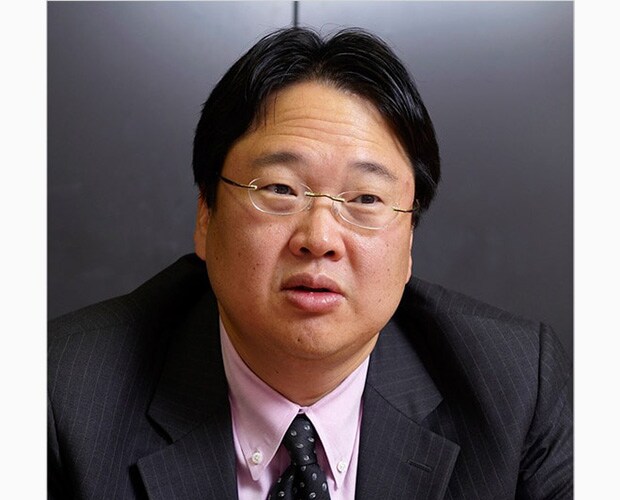
“To accomplish something new, we need to turn out results before anywhere else in the world. Research is all about speed,” says Dr. Ryuichi Morishita.
Dr. Morishita also advocates responding to the changing times with regard to the cultivation of researchers.
“While universities are the place for teaching the latest technologies, in this constantly evolving age, ‘latest’ may merely be a half-year lead. Today, any technology quickly becomes obsolete—it is not a time when we can just teach technology.”
As such, Dr. Morishita is focusing efforts into the guidance to help his lab members develop the ability to manage projects. He is ardently teaching the laboratory’s graduate students everything from how to set goals in research to how to work toward those goals. “Researchers can only advance by getting external recognition for their research results. Also, from the perspective of getting competitive funds, I try to teach them how to correctly set goals and the means to reach those goals.”
We’re here to provide you with more details.
Reach out today!

05. Technical advancement in peripheral areas is also essential for progress in advanced research
Experimental equipment is also important alongside research techniques and organizational structures to accelerate and streamline research. Dr. Morishita’s laboratory promotes equipment investment for instruments that speed up research while also taking cost efficiency into consideration.
One of the difficulties in gene therapy research is the clarification of the mechanism of how genes taken into the body behave. Even when evidence is acquired through animal testing, it is difficult to actually trace the action in a human body. “In the continuing course of gene therapy research, it is necessary to go beyond the basic genetic research and step up the wider range of peripheral techniques such as those for observing and analyzing cell functions. In clinical settings, innovation is required in everything from drug manufacturing to diagnosis and tracing,” emphasizes Dr. Morishita.
“When thinking of future medical care, the first key topic is the integration of devices and drugs. Together with that, polymer drugs will become more important.I don’t think conventional research methods stand a chance in contributing to our getting ahead. The barriers that need to be crossed in bringing research results into clinical settings are especially high. Taking decoy-eluting stents for example, while they are part of future medicine, it is important that we observe how far the decoy oligonucleotide reaches inside the blood vessel. If possible, technology that allows us to observe in vivo, in real-time, is needed.”
We’re here to provide you with more details.
Reach out today!

06. BZ Series contributes to specimen observation in brain research
At Dr. Morishita’s laboratory, fluorescence microscopes and confocal microscopes are key observation tools for tracing genes that have been injected into the body. Products are used to match different applications.
Among these instruments, KEYENCE’s All-in-One Fluorescence Microscope BZ Series is the instrument that has been used the most among the research associates since its installation in February 2008. It has been expressing its full potential through the observation of peripheral arteries, the heart and brain, and a broad range of cells in mice.
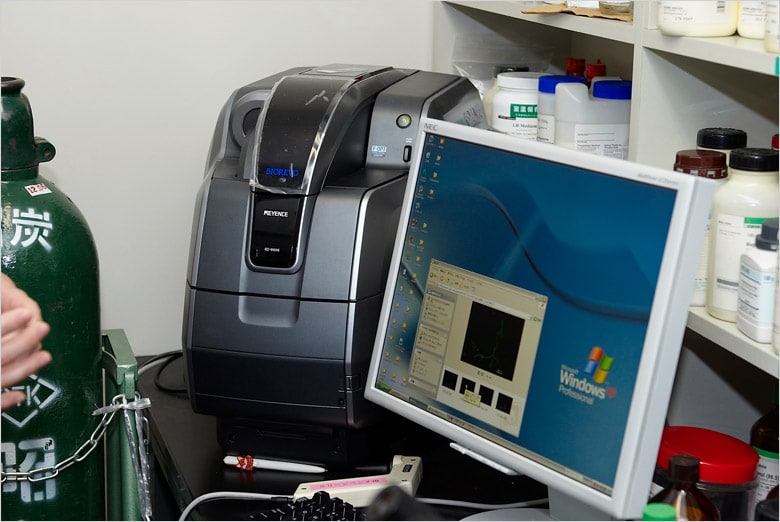
The BZ Series installed in the Morishita Laboratory sees a lot of use.
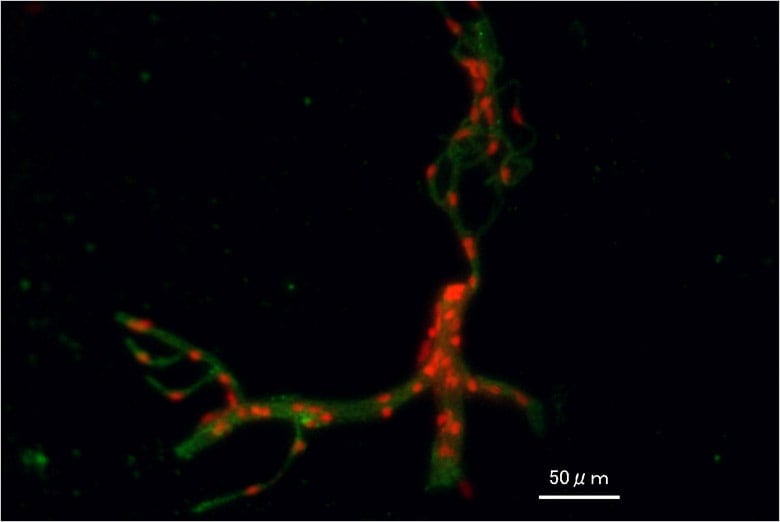
This is an image of a blood vessel in the brain captured using the BZ Series. The red stains show increased oxidative stress.
“I have been using the BZ Series as my first and only fluorescence microscope since I started researching,” says Dr. Shuko Takeda, who belongs to the Brain Group of the Clinical Gene Therapy Section. Dr. Takeda studies approaches to treat and prevent Alzheimer’s dementia based on Professor Morishita’s research findings. A patient with Alzheimer’s disease suffers nerve cell death. Dr. Takeda says, “This is actually deeply related to blood vessels, and we know about the risk factors, including high blood pressure. We are exploring ways to intervene on the basis of these factors.”
The BZ Series is mainly used to observe the blood vessels in a laboratory mouse’s brain. Blood vessels in an Alzheimer model mouse’s brain are extracted for magnified observation, photo capture, and measurement. Dr. Takeda explains that “the BZ fluorescence microscope is useful in that it allows for both fluorescence and brightfield observation and also provides easy operation.” Several tens of specimens are observed from a single mouse, and this process, including photography, only takes about an hour.
According to Dr. Takeda’s research, when oxidative stress increases inside brain blood vessels, blood circulation deteriorates. He explains that the BZ Series plays a major role in the observation of this condition. Blood vessels are thicker than tissue sections, which makes them more difficult to focus on in magnified observation. In that regard, the BZ Series’ quick full focus function enables observation as a fully focused image formed from multiple images with different focal points.The haze reduction function also helps easily remove fluorescence blurring, which is a common problem in fluorescence microscopy.
Dr. Takeda’s experiments often call for the observation of the whole brain. Therefore, he utilizes the measurement function as he scans across the entire sample with a lower magnification.
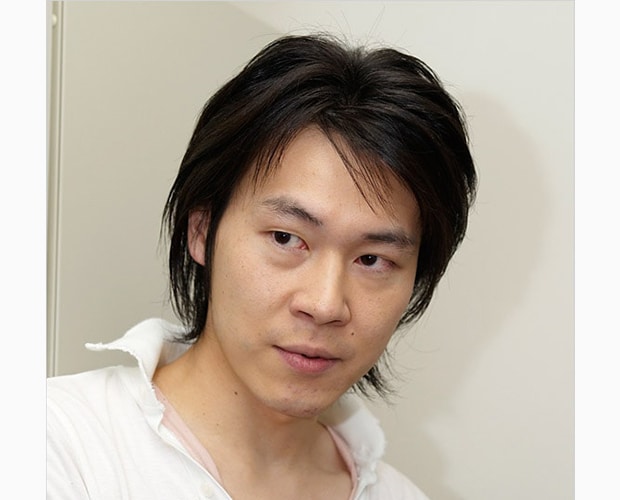
Dr. Shuko Takeda uses the BZ Series in his research into the treatment and prevention of Alzheimer’s dementia. He received the 23rd Takakuwa Eimatsu Award in 2004.
“Senile plaques, which are pathological findings of Alzheimer’s disease, have uneven distribution, which means that there is great advantage in being able to see the entire brain on one image. It is also useful in measuring the number and area of the plaques. Currently, we are using the BZ Series to take pictures for the publication we are working on.”
According to Dr. Takeda, when you look at past papers in the same research field, you see many photos that only show a part clearly, perhaps due to the difficulty in getting blood vessels into focus. In contrast, the BZ Series can capture images that clearly show both thick and narrow blood vessels alike.
In fact, the pictures taken by Dr. Takeda were well-received at an American conference. The clear photographs caught the interest of a researcher known to be a global authority in Alzheimer’s dementia research, with this researcher even asking Dr. Takeda to “send the protocol he used for the photography.” These days, the quality of experiment photographs can affect the quality of the paper.
We’re here to provide you with more details.
Reach out today!

07. Providing the essential functions for the observation of angiogenesis
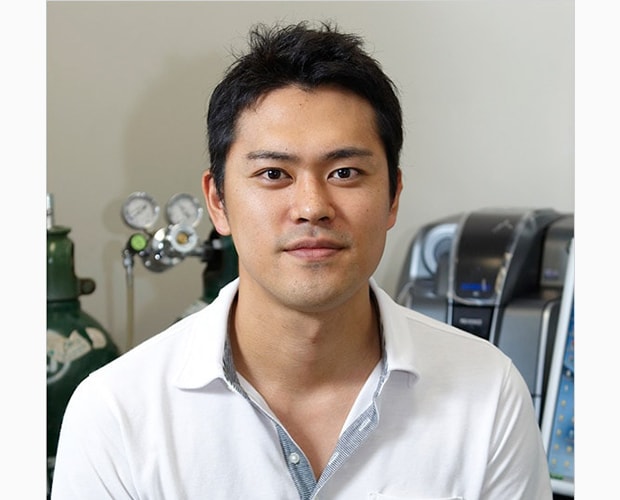
Mr. Fumihiro Sanada studies the relationship between HGF and aging. He uses the BZ Series for the observation of angiogenesis.
Mr. Fumihiro Sanada, belonging to the Morishita Laboratory’s Cardiovascular Group, studies the relationship between HGF and aging. While it was believed that endothelial progenitor cells (EPCs), which are cells that differentiated from bone marrow cells, are involved in angiogenesis, Mr. Sanada discovered that the action of the Angiotensin II hormone prevents the function of EPC by aging it. He also demonstrated that HGF suppresses aging in testing on mice.
Mr. Sanada uses the BZ Series to capture how a bone marrow-originating EPC becomes a blood vessel using green mice or transgenic mice. He says that the BZ Series “is useful in observing leg muscle at low magnifications and examining how and to what extent new blood vessels have formed after the administration of HGF.” Mr. Sanada used a confocal microscope previously, but ever since he started using the BZ Series, “the time spent from specimen observation to photography was cut in half, significantly improving work efficiency.”
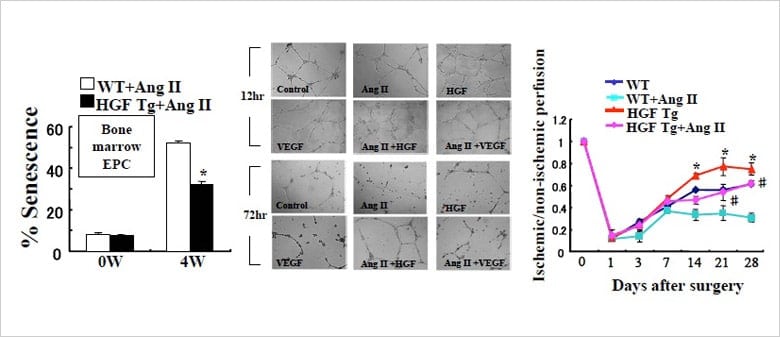
Mr. Sanada proved that the antioxidation of HGF suppressed the aging of EPCs caused by Angiotensin II and maintained angiogenic properties.
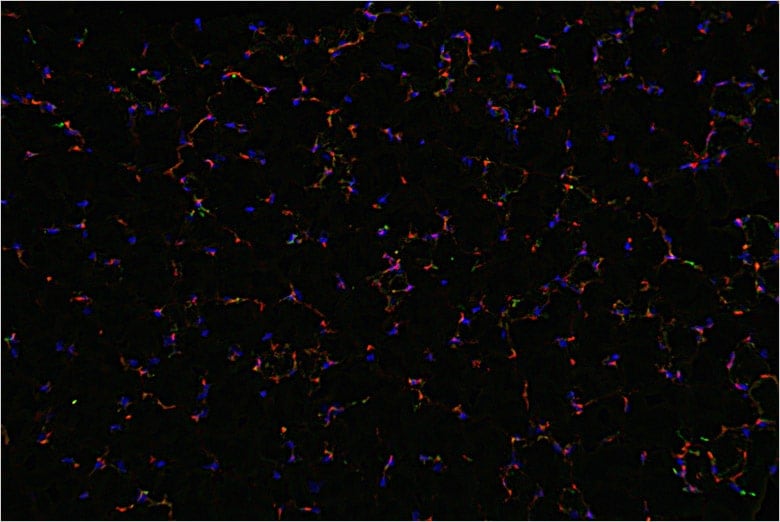
Mr. Sanada proved that the antioxidation of HGF suppressed the aging of EPCs caused by Angiotensin II and maintained angiogenic properties.
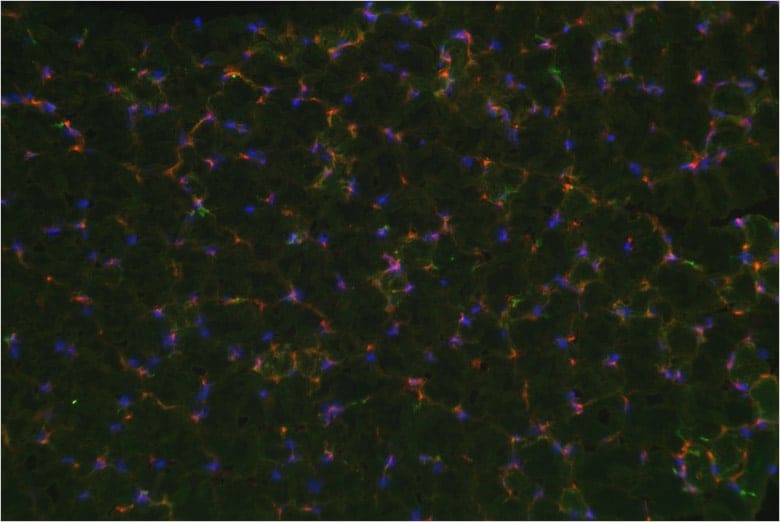
This picture shows that EPCs that differentiated from bone marrow cells have formed blood vessels.
Fluorescence blurring has occurred.
Mr. Sanada uses the haze reduction function the most out of the functions provided by the software. “Cells are shown with different clarity depending on where the fluorescence hits, so it is an essential function to eliminate fluorescence blurring. While we had so much trouble getting the target in focus when we were using a confocal microscope, this has become an easy task ever since we started using the BZ Series.”
It is essential to maintain a non-contaminated state as much as possible when observing live cells. With that in mind, Mr. Sanada explains, “The BZ Series does not need a darkroom and is small enough to have inside the laboratory, which makes it a convenient microscope to observe prepared specimens right away with,” as an advantage of the microscope.
Additionally, for clear observation of cells, a confocal microscope needs oil immersion, which tended to distort the specimen image due to the oil when the magnification was changed. Mr. Sanada points out, “The BZ Series almost never needs oil immersion, which is a great advantage.”
In addition to EPC research, Mr. Sanada also studies the effect of periostin, a protein that plays a part in bone regeneration, on blood vessels. He says that he does cancer proliferation inhibition experiments in this research and that the BZ Series’ measurement function is useful in measuring the cancer-infiltrated area.
Aside from Dr. Takeda’s Brain Group and Mr. Sanada’s Cardiovascular Group, Dr. Morishita’s laboratory also covers molecular treatment, kidney, arteriosclerosis, oligonucleotide therapeutics, bone, and antiaging research as part of its active engagement in joint research with the industrial sector for the realization of gene therapy. Dr. Morishita seeks to promote the laboratory’s contribution to medical worksites through a systemic approach to gene therapy and by developing research from a wide variety of viewpoints.
Dr. Morishita’s philosophy flows throughout the laboratory: “To quickly deliver research results that benefit patients.” Every group is focused on efforts to accelerate and streamline research with the attitude of “being quick to work on anything new.”
The BZ Series is favored by such researchers, and not only is it frequently used, it has become an essential tool for innovative discoveries. This KEYENCE microscope supports cutting-edge research in gene therapy through quick and efficient magnified observation.
(As of October 2008)
We’re here to provide you with more details.
Reach out today!

<General knowledge> Gene therapy
Gene therapy is designed to introduce normal genetic material into the body to repair cells and thereby treat congenital diseases and other diseases that develop due to gene alterations. Traditionally, viral vectors were used in research, but now plasmids are considered as a safer alternative to introduce genetic materials into the body. More recently, gene therapy is increasingly researched for its adaptation to acquired diseases such as adult lifestyle-related diseases.

